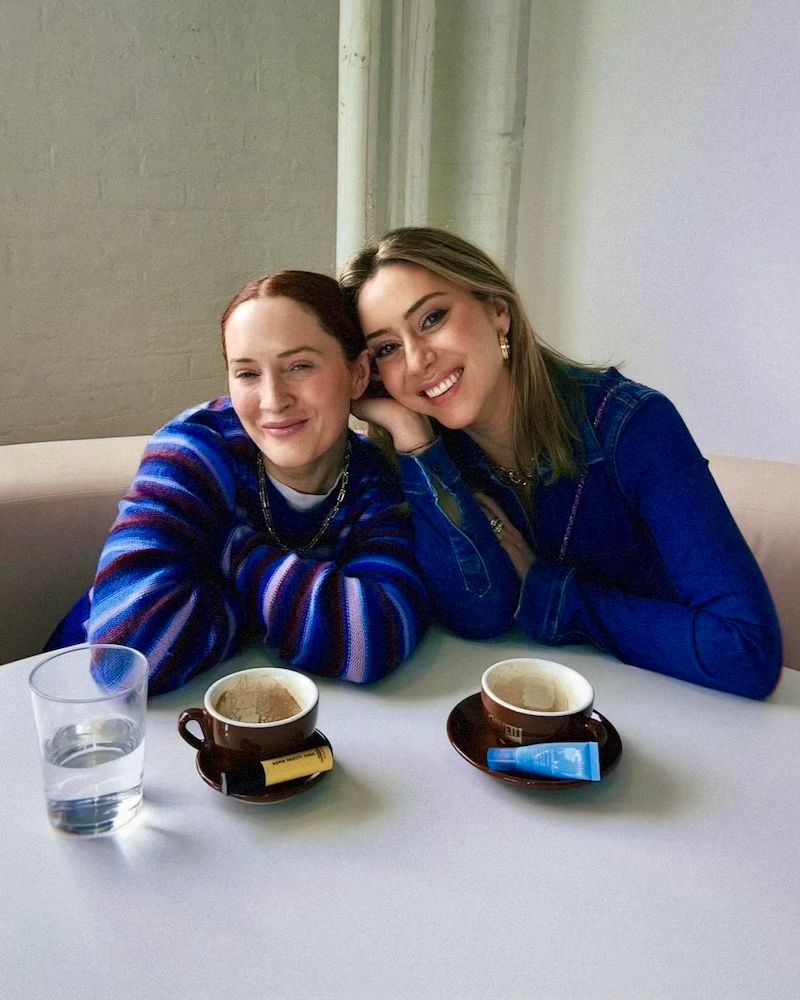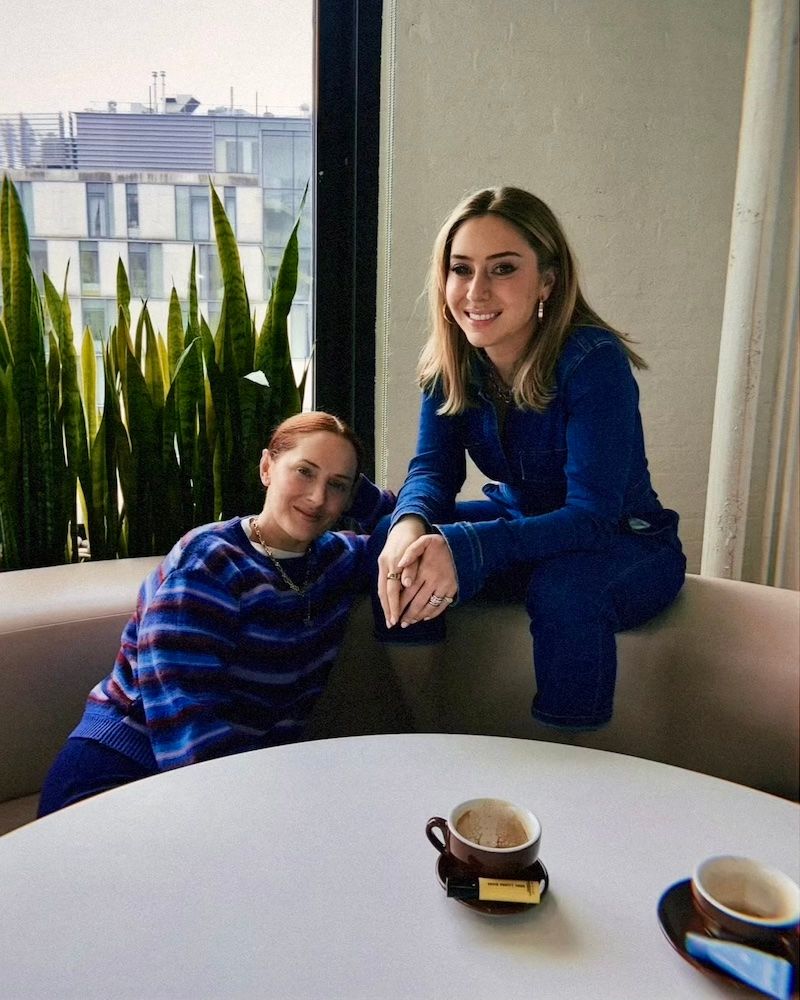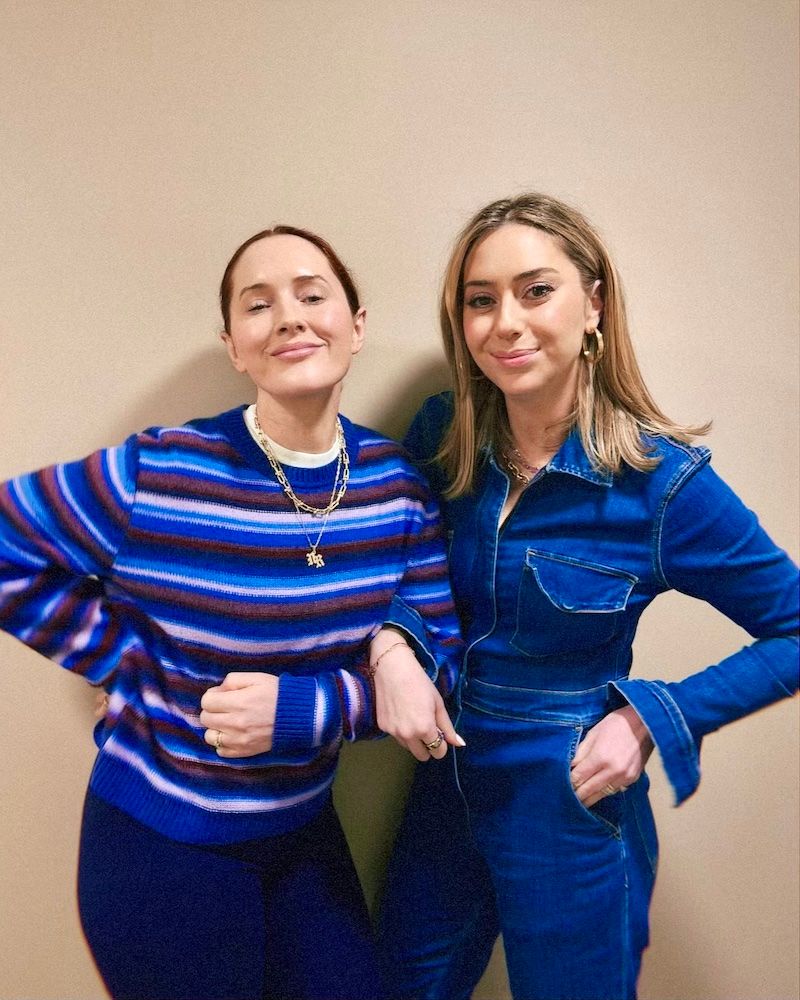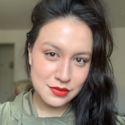Did you know that New York’s top cosmetic dermatologist and the city’s leading aesthetician are friends? Now you do; Shereene Idriss, known for #PillowTalkDerm on TikTok and her year and a half appointment waitlist, and Sofie Pavitt, Soho’s foremost acne specialist, have been close for a while. It’s an alliance that makes even more sense if you consider that, sure, they’re big on skin stuff, but they’re even bigger on candor. To just imagine those conversations. What they really think about fillers... Their opinion on Tiktok’s role in skincare... And if they hear about exosomes one more time they’re going to… Oh hold on there. You don’t have to imagine. ITG brought them together to capture all of their unfiltered thoughts. Behold, everything you wanted to ask New York’s top skincare gurus, answered, below.
Social media has radically shifted how people view skincare and beauty. How do you think it has influenced the kinds of treatments people want, and their expectation of results?
Shereene Idriss: Skincare really took off on social media around 2017 and exploded in 2020. Trends move so fast now. Everyone wanted a square jaw around 2018, then it was threads, fox eyes,and lifted foreheads. Then came the obsession with lips and even earlobes had a moment. Now it’s almost like fillers are the devil—everyone’s afraid of migration. Facelifts are having a comeback. But it’s only a matter of time until this dies out because people are going to start looking like freako versions of themselves.
Social is unfortunately driven by fear—it’s a cesspool of leaning into insecurities. Even worse, some professionals lean into that fear to push what they do. I’ll be the first to say: If you want a facelift, go for it and come back to me for maintenance instead of chasing laxity I can’t fix with fillers. But I’ll also be the first to say: You don’t need anything. Especially with the younger girls in my office, I tell them, “You’re 28. Just build a good skincare routine.”
Sofie Pavitt: There’s so much misinformation. People are overdoing it—layering too many actives, chasing ingredients just because they’re trending. I see so many cases of perioral dermatitis that are directly tied to product overload.
I mostly work with people who have problematic skin, and acne is a perfect example of how distorted people’s perceptions have become because of social media. Someone will come in with one small mark and say they have the worst acne. A good candidate for our acne program is someone dealing with consistent breakouts they can’t manage, usually in specific areas. We start with a consultation, review their product routine, and assess lifestyle factors: Are they changing their pillowcase often? What hair products are they using? Are they washing their hats properly? It’s funny because I can tell within five to ten minutes whether I’ll be able to clear someone just based on their attitude. Some people just don’t want to hear it. They don’t want to hear what’s not working—they’re holding onto what they think they know. My job is to help them reset and start fresh.

Can you speak to the sudden fear of filler? How should people approach it?
SI: Nuance is completely lost online. How old were you when you started? How often were you getting it? What type of filler was used? How much? Where—superficial, deep, or both? And how many times have you done it before you’ve even started aging?
Aging isn’t linear. There are years where it accelerates and others where it barely shows. Not that I’m Michelangelo—far from it—but using filler well means really looking at a face, understanding where someone is in their aging process, and placing that in the larger context of their life. Sometimes I’ll say, “You have laxity. You’ve got too much skin. Go get a facelift, cut that skin out, then come back and we’ll play with proportion.” I’m not going to lie and try to fix that with one syringe of filler—it’s just not possible. But can you use filler to rebalance volume, even out the face, and help someone feel more like themselves? Absolutely.
What frustrates me is that because of all the negativity online, people are terrified. I see it every day in my practice. I get a little bit worked up because it’s eating up people’s confidence, especially women in their late 30s and 40s who are starting to feel like they’re disappearing.
When it comes to ingredients, what are you into, and what’s overhyped?
SI: The whole exosome game is overhyped and over-marketed. Let’s take a step back: Exosomes are messengers that carry growth factors, cytokines, mRNAs, and so on, to activate other cells. Unlike growth factors—which just tell fibroblasts to make collagen—exosomes do more: They tell different cells to make collagen, elastin, and speed up turnover.
Yes, from a medical standpoint, human-derived exosomes are interesting. But three things. One: You can’t sell human-derived tissue in over-the-counter skincare. Two: If they are human-derived, how are they being preserved? Three: If a product is truly altering your skin like it claims, how is it not considered a drug? The reality is that what’s sold over-the-counter is usually plant-derived exosomes, which are just antioxidants. It’s all marketing hype. You’re buying a glorified antioxidant serum that happens to use the word exosome—and that kills my soul.
Also, in the US, human-derived exosomes aren’t FDA regulated. What does that mean if you’re getting them injected? You don’t know what you’re getting. There’s no manufacturing oversight. Worst case scenario: Say you have a dormant cancer cell in your parotid gland and someone injects exosomes there—could it activate that cell? We just don’t know yet.
I don’t like to be a guinea pig. I always say: Everything great was once new, but not everything new is great. So I tell my patients, let’s wait and watch.
SP: This is the pep talk I needed before getting on a plane to Seoul. [Laughs]
SI: But Seoul’s more focused on polynucleotides (PDRN), which aren’t exosomes. They’ve been around for 10 years; I’m less scared of them. Exosomes are still the wild west.
SP: Polynucleotides are really interesting—they help stimulate collagen and elastin production and have a lot of traction in Korea. In the US, azelaic acid is having a moment, but I prefer mandelic acid for my clients. It’s gentle. I don’t go the traditional route with acne-clearing—I don’t use salicylic acid in my line. And I’m still a fan of old-school benzoyl peroxide. I know it got a bad rap after a Valisure paper claimed it could form high levels of benzene, a carcinogen, if stored improperly. But if you use it the right way and keep it at room temperature, you’re fine.
I know this might be controversial, but I stand by “non-comedogenic” as a brand value. Yes, it’s about the formula, and technically, a tiny percentage of a comedogenic ingredient might not break you out. But for a client who doesn’t know the difference between coconut oil and coconut alkanes, it’s easier to avoid coconut entirely.
Also, I talk about beef tallow all the time. Why shouldn’t you use it? Because it’s animal fat. Hundreds of years later, we have efficacious skincare ingredients—why go back to putting animal fat on your face?

Relatedly, what are some myths you’d love to never hear again?
SP: That water clears acne. Oh my God.
SI: I hate when people say sunscreen is toxic. You’re not going to die from sunscreen. The exhaust in your face walking down Fifth Avenue is a bigger threat. And the idea that chemical sunscreens are dangerous because they “get into your bloodstream?” The dose makes the poison. People have completely lost sight of that.
I also hate the myth that even a touch of filler will make you look crazy. I’m not a filler pusher, but that belief is actually harmful. Not everyone wants—or can afford—surgery. People just want to feel a bit more comfortable in their skin, and there are body-positive ways to do that. But then they get cornered into thinking they’re doomed to look like Jocelyn Wildenstein—may she rest in peace—if they try anything. And just for the record, what happened in her case was the result of too much surgery, not filler.
Unfortunately, not everyone can see Dr. Idriss and Sofie. What should people look for when choosing a dermatologist or a facialist?
SP: If you’re seeing a facialist, make sure they’re actually working on skin, not just creating content. Any derm or a facialist should be practicing and seeing people regularly. I’m still learning every single day. Everyone’s skin is so different, and that’s what makes our work interesting.
SI: From the cosmetic derm perspective, I always say: The best money you’ll spend is the consultation fee—just throw it out the window and treat it as your research phase. While you’re there, observe everything. What does the staff look like? Are the front desk girl’s lips blown out? Because guess what, she probably got them done there.
Then see how you feel when the doctor walks in. Are they actually listening, or talking through you? Are they trying to understand your concerns, or pushing a product or procedure? You can tell if someone’s trying to make a quick buck.
It’s also important to understand your long game. Be honest with yourself: Are you just looking for a bargain, or are you looking for someone to grow with over time? On my end, I’m observing my patients, too. I’m not trying to be a one-hit wonder. If someone tells me they’ve seen five different derms, I’ll ask why—and if no one made them happy, I probably can’t either.
SP: Finding a facialist is kind of like finding a hairdresser. It’s an intimate relationship—we’re right by your face for over an hour. Because I specialize in “problematic” skin, consistency matters. That might mean seeing someone every month for six months, then tapering to quarterly maintenance facials.
I’m never offended if someone wants to try another facialist. But if you’re really trying to make progress, it pays to stick with one person. We know your skin, your routine, your triggers. And it’s not going to be one facial that transforms your skin—it’s the accumulation of consistent care over time. It’s like how a derm will track your results with fillers or lasers. Same with what I do.
Is there a “right” time to start getting Botox?
SI: Depends. You can’t generalize it—everyone ages differently. I’ve seen 20-year-olds who look 40, and I’ve seen 40-year-olds who don’t need a thing. As a rule of thumb, I tell people to wait until you start seeing lines that are present at rest—not the ones that show up when you raise your brows or frown, but the ones etched in that make you look angry, worried, or tired even when your face is still. That’s usually your cue. It also helps to look at your parents—they’re often your genetic blueprint.
If we’re speaking generally, I wouldn’t recommend starting Botox before your mid to late 20s. You really don’t need it. Focus on a solid skincare routine, healthy habits, and sun protection. That’s your best prevention plan—and eventually, you’ll maintain everything else more easily.

How about facials?
SP: It’s different with facials. There are a lot of teens who could benefit, especially with my type of facial. But sometimes I have moms who bring in kids who don’t actually need one; they just need some products with a little benzoyl peroxide, salicylic acid, or mandelic acid.
SI: I actually send a lot of patients to aestheticians. But I also tell people: You should not be dependent on an aesthetician to have good skin for the rest of your life. And by the way, the same goes for derms. You shouldn’t be dependent on me. That’s why education is key.
You are both New York institutions. Who do you personally look up to?
SI: I look up to Sofie, truly. She’s amazing, especially for acne patients. I also have a lot of respect for Joanna Vargas. She was also somebody who was there for me during hard personal times. And I really admire Cynthia Rivas. I like what she’s doing with her career and I like how she treats my patients, as well.
SP: Joanna’s awesome. Georgia Louise is old school. She has an epic technique and amazing massage. There’s a new group of downtown facialists, including Raquel Medina and Elizabeth Grace Hand, that are great. And for younger people or people without a huge budget, I think it’s amazing how Glowbar is making facials more accessible.
Skincare is a notoriously saturated industry, yet you’ve both launched your own lines—and you each chose to begin your careers by working under others before opening your own practices. What was the value of that early experience, especially in how it shaped your approach to skin and product development?
SI: It was always inevitable that I’d open my own practice. My husband says I’m “unemployable” because I say whatever comes to mind. But I’m grateful I didn’t start right out of residency. I was able to learn from the best of the best—all of whom taught me what to do and also what I didn’t want to repeat. It was only when the pandemic hit and I had a couple of months of doing nothing that I started looking for office spaces—I opened officially in 2021.
SP: I worked in fashion for 15 years. My biggest job was designing handbags for Michael Kors, and they figured out that it was cheaper to send the design team to Seoul to look at samples every 12 weeks than it was to FedEx them. I would travel to South Korea four or five times a year, and I became fascinated with products but also with the way that they treated skin. In New York, facials were mostly luxury experiences at the time: expensive, lots of massage, and honestly more about relaxation than results. But in Seoul, I wouldn’t even change into a robe. It was all results-driven, and my skin would look incredible afterward.
My facials are very unsexy—I do a lot of peels and extractions—and not sensorial. There’s no music. I talk to my clients about what they’re using, their medications, supplements—how to actually support their skin between derm appointments. When I decided to open my own studio, I quit my job and started working for a dermatologist. And I still do—every other Wednesday at Center Aesthetic & Dermatology, where I handle lasers and microneedling. That work keeps me grounded and informed.
People are launching their own practices earlier and earlier now. That's a product of society where entrepreneurship is way over-glorified and everyone feels like they need to be a bajillionaire by 30. But you need time to grow. It’s not just about making money or being in the limelight. You need the skills to back up your role.
—Daise Bedolla
Photos via ITG










